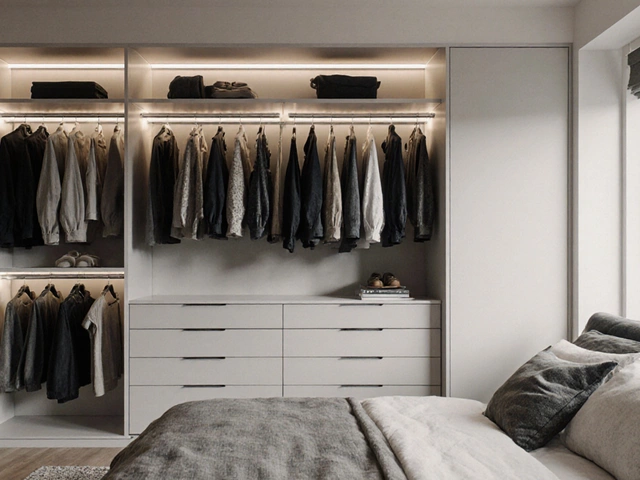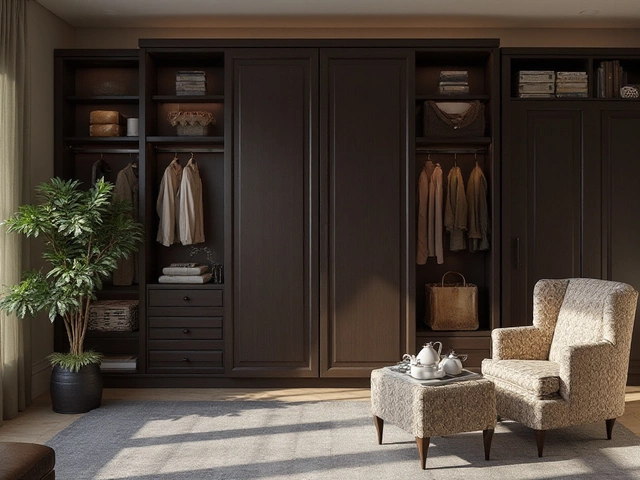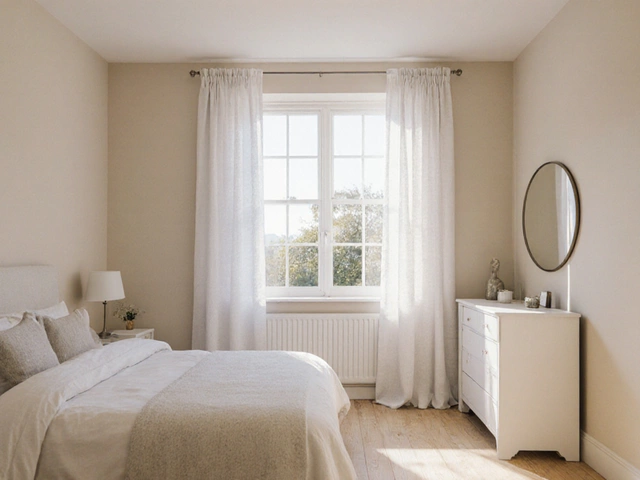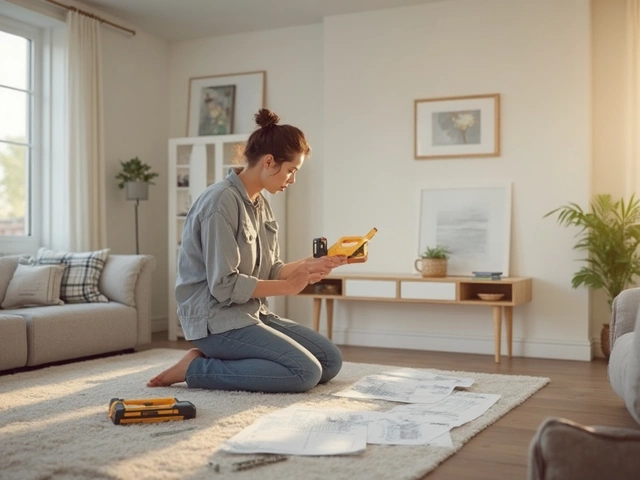New Home Decor Wait Time Calculator
Enter your home details to get your personalized recommendation.
Based on construction science and moisture behavior in new builds
You just got the keys to your brand-new home. The walls are white, the floors are clean, and everything smells like fresh paint and sawdust. You’re ready to hang art, buy curtains, and turn it into your sanctuary. But then your builder, your real estate agent, or even that one friend who’s done this before says: Wait. Don’t decorate yet. Why? It’s new. Shouldn’t it be ready?
It’s Not About Aesthetics-It’s About Physics
New builds aren’t like buying a used house where everything’s already settled. When a house is built from scratch, it’s made of materials that are still changing. Wood dries out. Plaster shrinks. Concrete cures. Bricks absorb moisture. All of this movement happens slowly, over weeks and months-and it can wreck your decorations if you rush.
Imagine hanging a heavy mirror on a wall that’s still shrinking. The plaster behind it might crack. The nails or screws holding it could pull loose. That’s not theory-it’s something contractors see every day. In the first six months after construction, walls can shift by up to 1/8 of an inch. That’s enough to make picture frames tilt, doors stick, and tile grout crack.
The Drying Timeline You Can’t Ignore
Plaster and drywall are the biggest culprits. Most new builds use a mix of gypsum plaster and paper-faced drywall panels. These materials contain water when installed. Even with heaters running, it takes 4 to 8 weeks for them to fully dry. In humid climates, or if the builder rushed the drying process, it can take up to 12 weeks.
During this time, the walls are releasing moisture into the air. If you hang fabric curtains, install wallpaper, or put up upholstered headboards too early, that moisture gets trapped. Mold grows behind them. You won’t see it right away-but six months later, you’ll peel back a curtain and find black spots spreading under the fabric.
Paint is another trap. Many builders use quick-dry primer and topcoats to finish faster. But these paints don’t always cure fully. If you hang shelves or mount TVs on walls before the paint has fully bonded to the drywall, you risk peeling the surface off with the hardware. It’s not just messy-it’s expensive to fix.
Why Your Furniture Might Be the Problem Too
It’s not just wall decor. Your furniture can cause issues too. New timber floors expand and contract with humidity. If you place heavy sofas or bookshelves right away, they can leave permanent dents or cause the floorboards to buckle. Wood flooring needs at least 60 days to acclimate to your home’s environment before heavy items are placed on it.
Even your rugs matter. Cheap synthetic rugs trap moisture underneath. In a new home, that moisture has nowhere to go. Over time, it can rot the subfloor or cause adhesive to fail. That’s why experts recommend using breathable, natural fiber rugs-or waiting until the house has dried out completely before laying anything down.
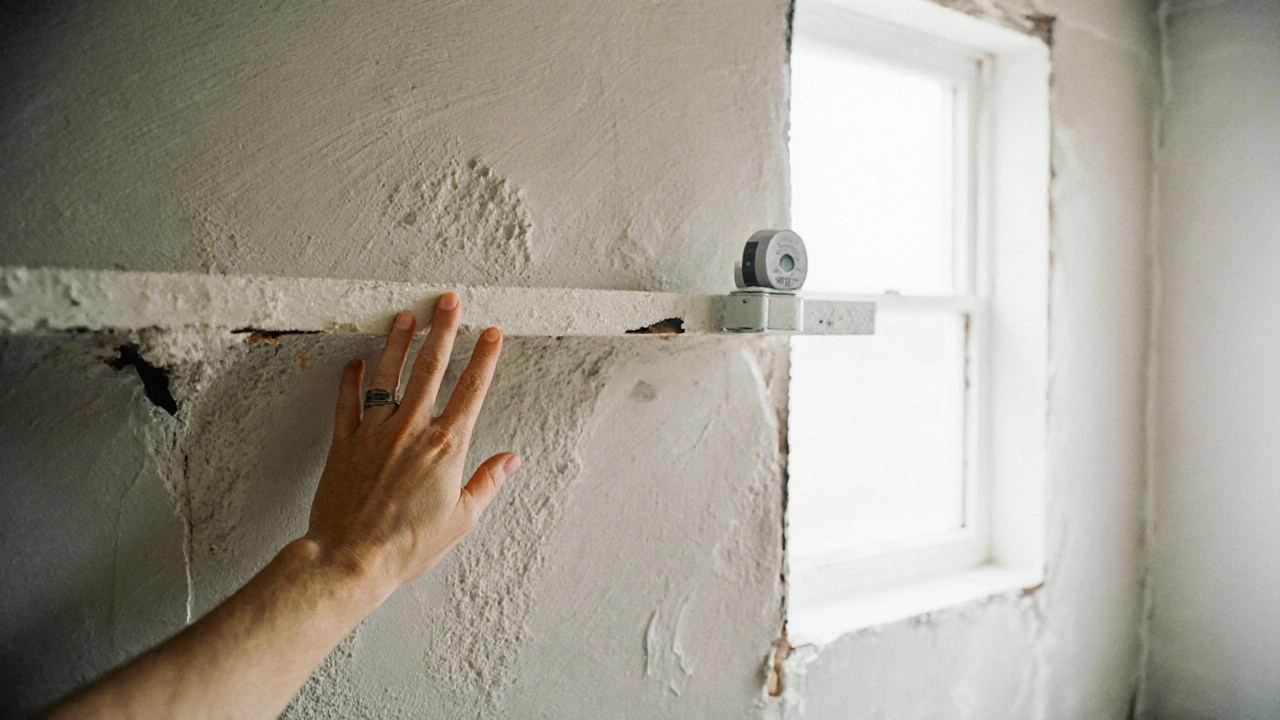
What You Can Do While You Wait
You don’t have to sit around doing nothing for months. There’s plenty you can do to make your new space feel like home without damaging it.
- Hang lightweight, temporary art with removable adhesive strips-no nails or screws.
- Use freestanding lamps instead of hardwired fixtures until the electrical system stabilizes.
- Bring in plants. They help regulate humidity and make the space feel lived-in.
- Test your HVAC system. Run the heat and AC for a few days to see how the house responds to temperature changes.
- Open windows daily for 15-20 minutes. This helps moisture escape and speeds up drying.
These small steps help you connect with your space without risking permanent damage.
When Is It Safe to Start Decorating?
There’s no magic date, but here’s a simple rule: wait until the house feels dry to the touch and the air feels stable.
Use a hygrometer (a cheap device you can buy for under $20) to measure humidity. If indoor humidity stays between 30% and 50% for two full weeks, you’re likely safe to start hanging things. If it’s still above 60%, wait longer.
Also, check the walls. Run your hand over them. If they feel cool or damp, they’re still releasing moisture. Wait. If they feel warm and dry, you’re good to go.
Most builders recommend waiting at least 3 months before installing heavy shelves, wallpaper, or permanent lighting. For full peace of mind, wait 6 months. That’s when most structural movement settles.
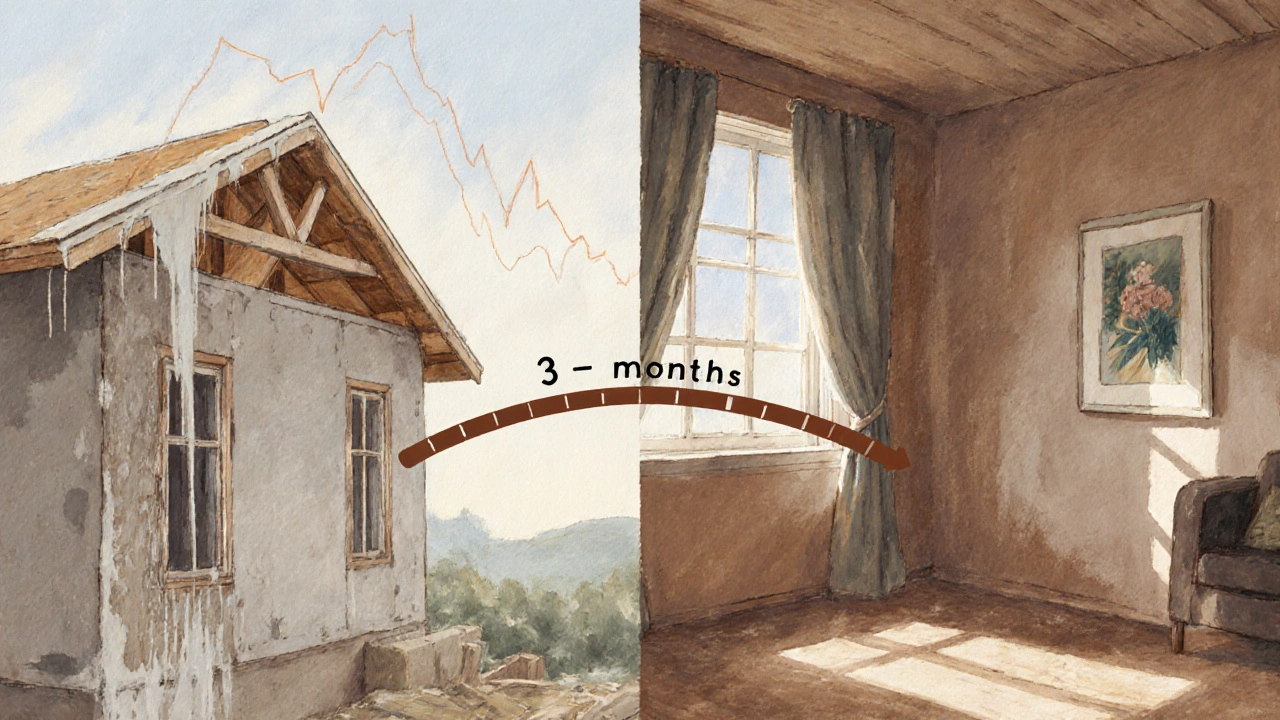
What Happens If You Ignore This Advice?
You might get away with it. But here’s what people who didn’t wait ended up with:
- A $1,200 mirror that fell off the wall because the plaster behind it cracked.
- Wallpaper that bubbled and peeled after three months-because moisture got trapped underneath.
- Hardwood floors that warped under a heavy dresser, requiring a full replacement.
- Mold growing behind a velvet headboard that was installed too soon.
None of these were covered by the builder’s warranty. Why? Because they were caused by premature decoration-not construction defects.
Insurance won’t cover it either. Homeowners policies don’t pay for damage caused by ignoring basic building science.
Why Builders Don’t Tell You This
It’s not that builders are hiding something. They’re focused on finishing the project on time and under budget. Once the last coat of paint dries, their job is done. They don’t stick around to explain how the house behaves after they leave.
Real estate agents? They want you to close the deal and move in. They’re not trained in construction science. Most have never lived in a brand-new home themselves.
So you’re left to figure it out on your own. And that’s okay. Now you know.
What to Do After the Waiting Period
Once you’re past the 3- to 6-month mark, here’s how to start decorating safely:
- Inspect the walls for hairline cracks. Fill them with flexible caulk before painting or hanging anything.
- Test your drywall with a small nail. If it holds without crumbling, it’s ready.
- Use toggle bolts or wall anchors for anything heavier than 10 pounds.
- Choose removable, non-damaging mounting solutions first-like Command strips or magnetic hooks.
- Start with lightweight decor. Add heavier items gradually over the next few months.
Don’t rush the final look. A well-decorated home isn’t about doing everything at once. It’s about letting the space breathe, settle, and reveal what it needs.
Your new home isn’t a blank canvas. It’s a living thing. Give it time to adjust-and your decorations will last longer, look better, and feel more truly yours.
How long should I wait before hanging pictures on new walls?
Wait at least 3 months. Plaster and drywall need time to fully dry and stabilize. In humid climates or if the builder rushed the process, wait 6 months. Use a hygrometer to check indoor humidity-if it’s consistently between 30% and 50%, you’re safe to start hanging lightweight art with removable strips. Avoid nails or screws until the walls are completely dry.
Can I install wallpaper on a new build?
No-not for at least 6 months. Wallpaper traps moisture against the wall, which can cause mold, bubbling, and adhesive failure. New walls release moisture for months after construction. Even if the surface feels dry, moisture is still migrating from the inside. Wait until the house has fully settled and humidity levels are stable before applying any type of wallpaper.
Is it okay to put furniture in a new home right away?
You can move in furniture, but avoid placing heavy items directly on new hardwood floors for at least 60 days. Wood flooring expands and contracts with humidity. Heavy furniture can cause permanent dents or uneven settling. Use protective pads under legs, and avoid placing large pieces like bookshelves or pianos until the floor has fully acclimated.
Why do new homes have cracks after a few months?
It’s normal. New materials-especially wood framing, drywall, and plaster-dry out and shrink after construction. This causes minor hairline cracks around windows, doors, and corners. These aren’t structural issues. They’re called settlement cracks. Fill them with flexible caulk after 6 months, once movement has stopped. Don’t paint over them too soon, or they’ll reappear.
Should I use a dehumidifier in my new home?
Yes-if your indoor humidity stays above 60% for more than a week. New builds often have excess moisture trapped in walls, insulation, and flooring. A dehumidifier helps speed up drying, prevents mold, and protects your future decor. Run it for 12-24 hours a day for the first 2-3 months, then reduce usage as humidity drops below 50%.




